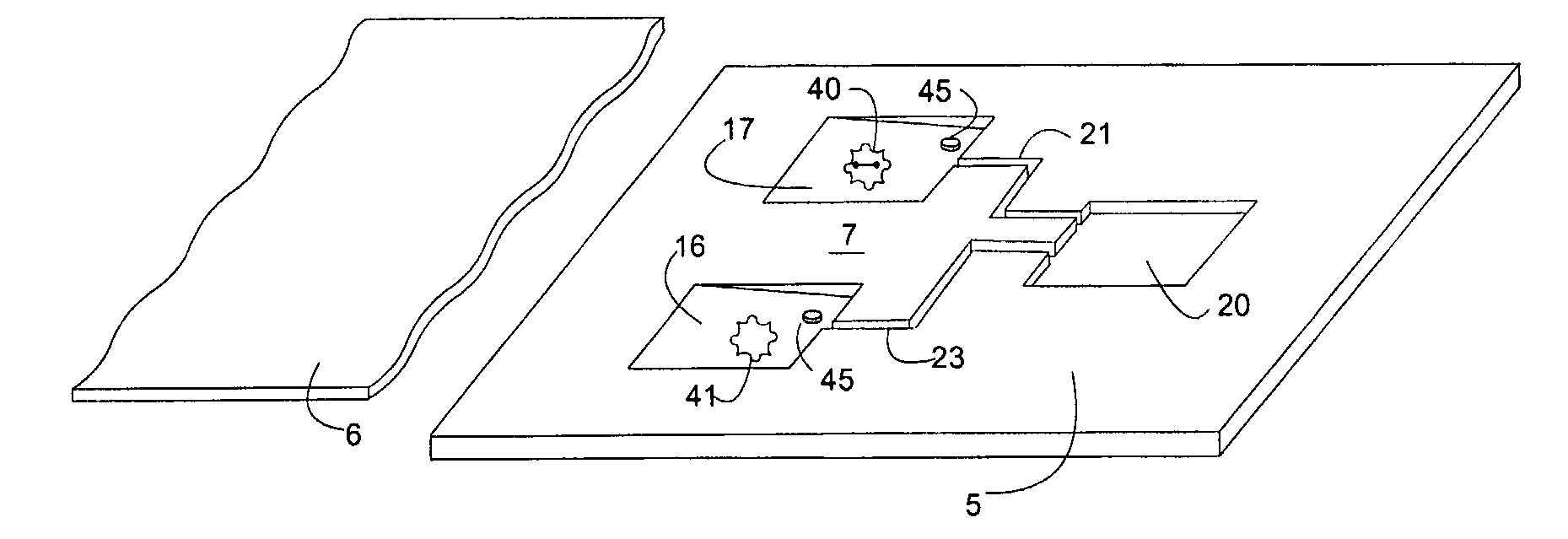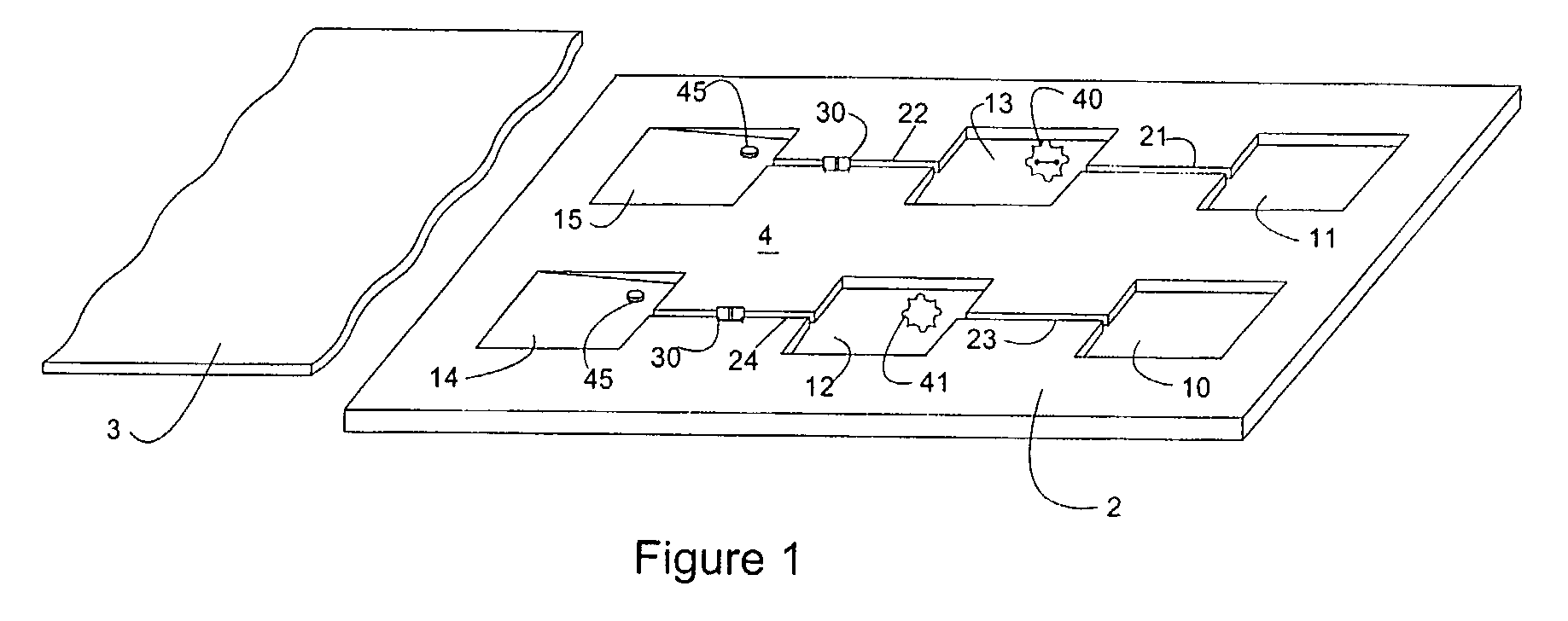Microfluidic device and leucocyte antigen mediated microfluidic assay
a microfluidic and antigen-mediated technology, applied in fluorescence/phosphorescence, instruments, laboratory glassware, etc., can solve the problems of inability to detect leukocyte antigen, etc., to achieve the effect of convenient operation
- Summary
- Abstract
- Description
- Claims
- Application Information
AI Technical Summary
Benefits of technology
Problems solved by technology
Method used
Image
Examples
example
[0059]Latent Johne's Disease infection in dairy cattle. Johnes is the second costliest disease in the dairy industry and it is caused by the Mycobacterium avium paratuberculosis organism (MAP). The organism is known to be one of the slowest growers in the tuberculosis family, is extremely difficult to detect in latent asymptomatic infections, and it generates practically no antibody response in dairy cattle for months, or even years. However, upon initial exposure to cattle, MAP triggers an initial response in a subpopulation of bovine leukocytes (memory T-cells). The record of that initial encounter is retained in the immunological memory of the T Cell.
[0060]A bovine whole blood sample that been previously exposed to MAP is placed in the sample microchamber of the microfluidic device of the invention. The blood is then moved to the first reaction microchamber and re-stimulated using protein antigens that are unique to MAP, in combination with the antigen accelerator α2-macroglobuli...
PUM
| Property | Measurement | Unit |
|---|---|---|
| diameter | aaaaa | aaaaa |
| size | aaaaa | aaaaa |
| thickness | aaaaa | aaaaa |
Abstract
Description
Claims
Application Information
 Login to View More
Login to View More - R&D
- Intellectual Property
- Life Sciences
- Materials
- Tech Scout
- Unparalleled Data Quality
- Higher Quality Content
- 60% Fewer Hallucinations
Browse by: Latest US Patents, China's latest patents, Technical Efficacy Thesaurus, Application Domain, Technology Topic, Popular Technical Reports.
© 2025 PatSnap. All rights reserved.Legal|Privacy policy|Modern Slavery Act Transparency Statement|Sitemap|About US| Contact US: help@patsnap.com



